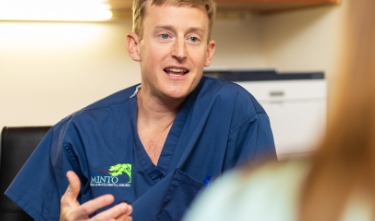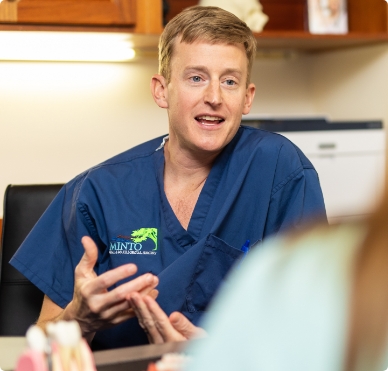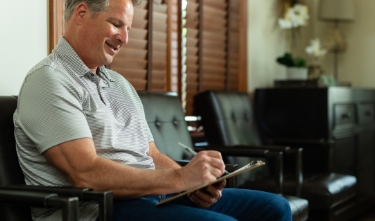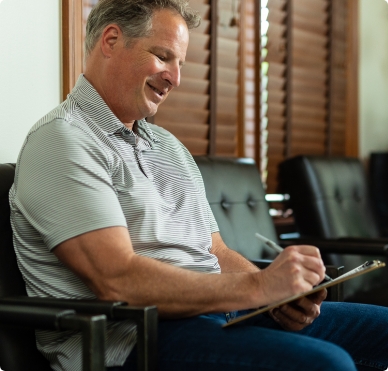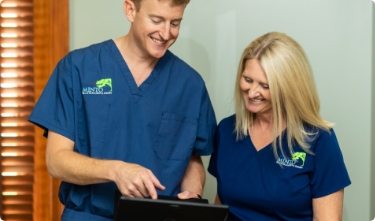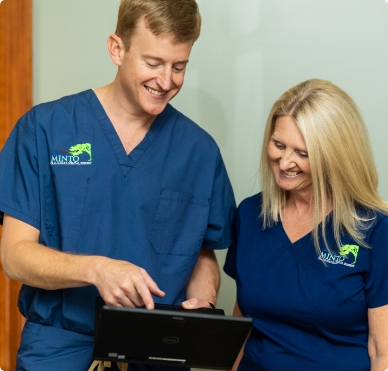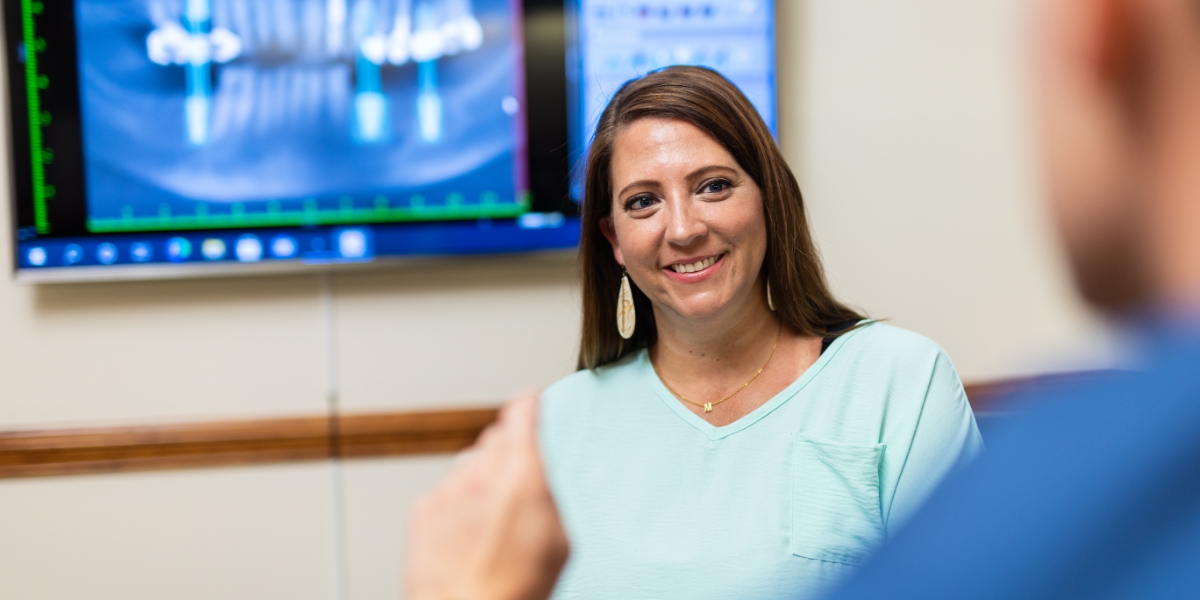

What Is Bone Grafting?
Most often, deterioration of your jaw bone occurs following the loss or extraction of a tooth. Without stimulation from your natural tooth root, the jaw bone can atrophy. When there is inadequate bone tissue to anchor dental implants, dental restoration can become considerably more challenging.
Bone grafting is a surgical procedure that can be performed to regenerate bone tissue where it is needed the most, providing the jaw bone length, height, and width needed to anchor the dental implants.

Types Of Bone Grafts
Autogenous Bone Grafts
Autogenous bone grafts are also called autografts, and they involve healthy bone harvested from elsewhere on your body. Most often, these bone grafts are from tissue harvested from the chin, jaw, lower leg bone, hip, or skull. Autografts are beneficial because they are not likely to be rejected by your body, and because they include living cellular elements that facilitate natural bone growth. The downside is that autogenous bone grafts do require an additional surgical procedure to harvest the bone tissue. For some patients, having this additional procedure may be inadvisable.
Allogenic Bone
An allogenic bone graft, also known as an allograft, uses dead bone that is harvested from a cadaver. Unlike autogenous bone grafts, allogenic bone grafts cannot produce new bone on their own. Instead, the grafted bone tissue provides a scaffolding over which bone from the surrounding bony walls can grow.
Xenogenic Bone
Xenogenic bone grafting involves bone tissue taken from another species, most often a cow. Before the graft, the bone is processed at a high temperature to minimize the risk of rejection or contamination. As with allogenic bone grafts, xenogenic grafts do not produce new bone on their own, but instead, create a framework over which bone from surrounding bony walls may grow.
Allogenic and xenogenic bone grafts both have the advantage of not requiring a second surgical procedure. However, they may also take longer to deliver results, and those results can be less predictable.
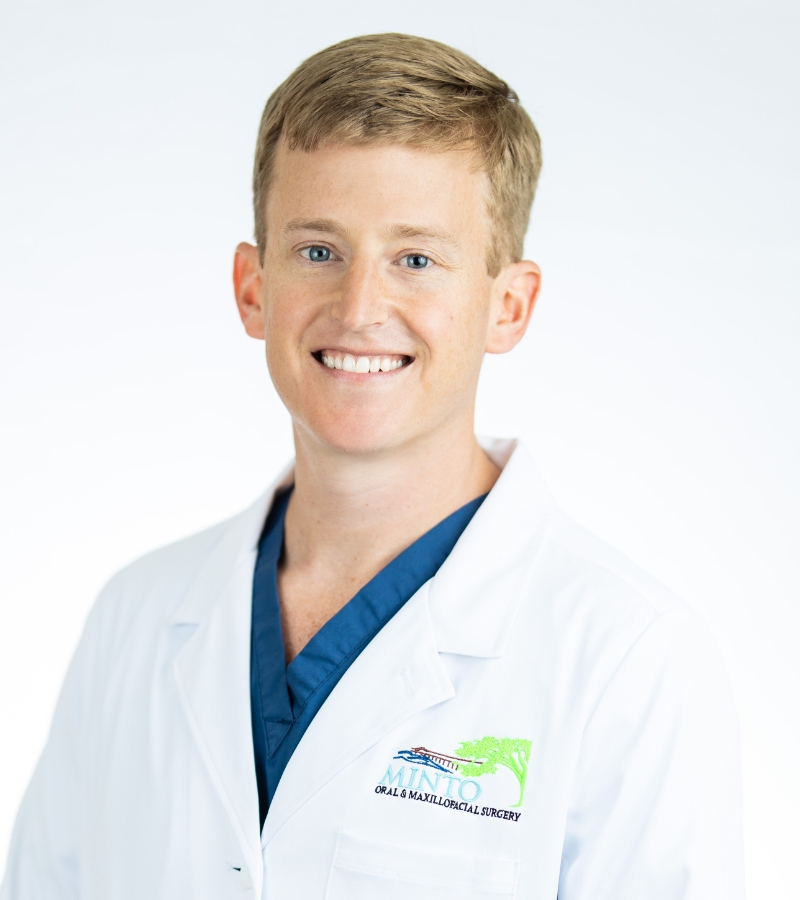 Meet Your Oral Surgeon
Meet Your Oral Surgeon
When considering your options for bone grafting in Fairhope, AL, make sure you schedule a meeting with Dr. David Minto. Dr. Minto has roots in the area and is pleased to serve the Baldwin County community as an experienced oral surgeon. When he is not treating patients, you can often find Dr. Minto saltwater fishing or else spending time with his wife and daughter. Get to know Dr. Minto by checking out his bio.
Bone Graft Substitutes
Demineralized Bone Matrix (DBM)/Demineralized Freeze-Dried Bone Allograft (DFDBA)
There are a few bone graft alternatives that use synthetic materials instead of real bone, starting with this procedure. It involves processed allograft bone containing collagen, proteins, and growth factors that are extracted from the allograft bone. These materials may be injected through a syringe or administered via putty or powder.
Graft Composites
Graft composites can consist of several combinations, including:
- Collagen/ceramic composite, which closely resembles natural bone composition
- DBM combined with bone marrow cells that aid new bone growth
- Collagen/ceramic/autograft composites
Bone Morphogenetic Proteins
Bone morphogenetic proteins (BMPs) are naturally occurring proteins that promote and regulate bone formation and healing.
Note that each of these bone graft alternatives provides the advantage of not requiring a second surgical procedure. However, there may also be some risks or complications, which your oral surgeon will tell you about during the initial consultation.
Schedule Your Consultation
Contact Minto Oral & Maxillofacial Surgery in Fairhope, AL at (251) 990-5959 to schedule your consultation.






